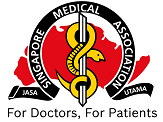Hearing rehabilitation in congenital canal atresia
Share this Article
Singapore Med J 2009; 50(11): 1072-1076
Hearing rehabilitation in congenital canal atresia
×
![]()
Emergency unscheduled returns: can we do better?
Share this Article
Singapore Med J 2009; 50(11): 1068-1071
Emergency unscheduled returns: can we do better?
×
![]()
Coitus and orgasm at term: effect on spontaneous labour and pregnancy outcome
Share this Article
Singapore Med J 2009; 50(11): 1062-1067
Coitus and orgasm at term: effect on spontaneous labour and pregnancy outcome
×
![]()
Methotrexate treatment for ectopic pregnancy at the KK Women's and Children's Hospital, Singapore
Share this Article
Singapore Med J 2009; 50(11): 1058-1061
Methotrexate treatment for ectopic pregnancy at the KK Women's and Children's Hospital, Singapore
×
![]()
The use of anti-D immunoglobulins for rhesus prophylaxis: audit on knowledge and practices among obstetricians
Share this Article
Singapore Med J 2009; 50(11): 1054-1057
The use of anti-D immunoglobulins for rhesus prophylaxis: audit on knowledge and practices among obstetricians
×
![]()
Reliability, technical error of measurements and validity of instruments for nutritional status assessment of adults in Malaysia
Share this Article
Singapore Med J 2009; 50(10): 1013-1018
Reliability, technical error of measurements and validity of instruments for nutritional status assessment of adults in Malaysia
×
![]()
Chromosomal abnormalities and reproductive outcome in Malaysian couples with miscarriages
Share this Article
Singapore Med J 2009; 50(10): 1008-1012
Chromosomal abnormalities and reproductive outcome in Malaysian couples with miscarriages
×
![]()
Venipuncture versus heel prick for blood glucose monitoring in neonates
Share this Article
Singapore Med J 2009; 50(10): 1004-1007
Venipuncture versus heel prick for blood glucose monitoring in neonates
×
![]()
The relationship between ACE gene ID polymorphism and aerobic capacity in Asian rugby players
Share this Article
Singapore Med J 2009; 50(10): 997-1003
The relationship between ACE gene ID polymorphism and aerobic capacity in Asian rugby players
×
![]()
Postponement of death around Chinese holidays: a Hong Kong perspective
Share this Article
Singapore Med J 2009; 50(10): 990-996
Postponement of death around Chinese holidays: a Hong Kong perspective
×
![]()


